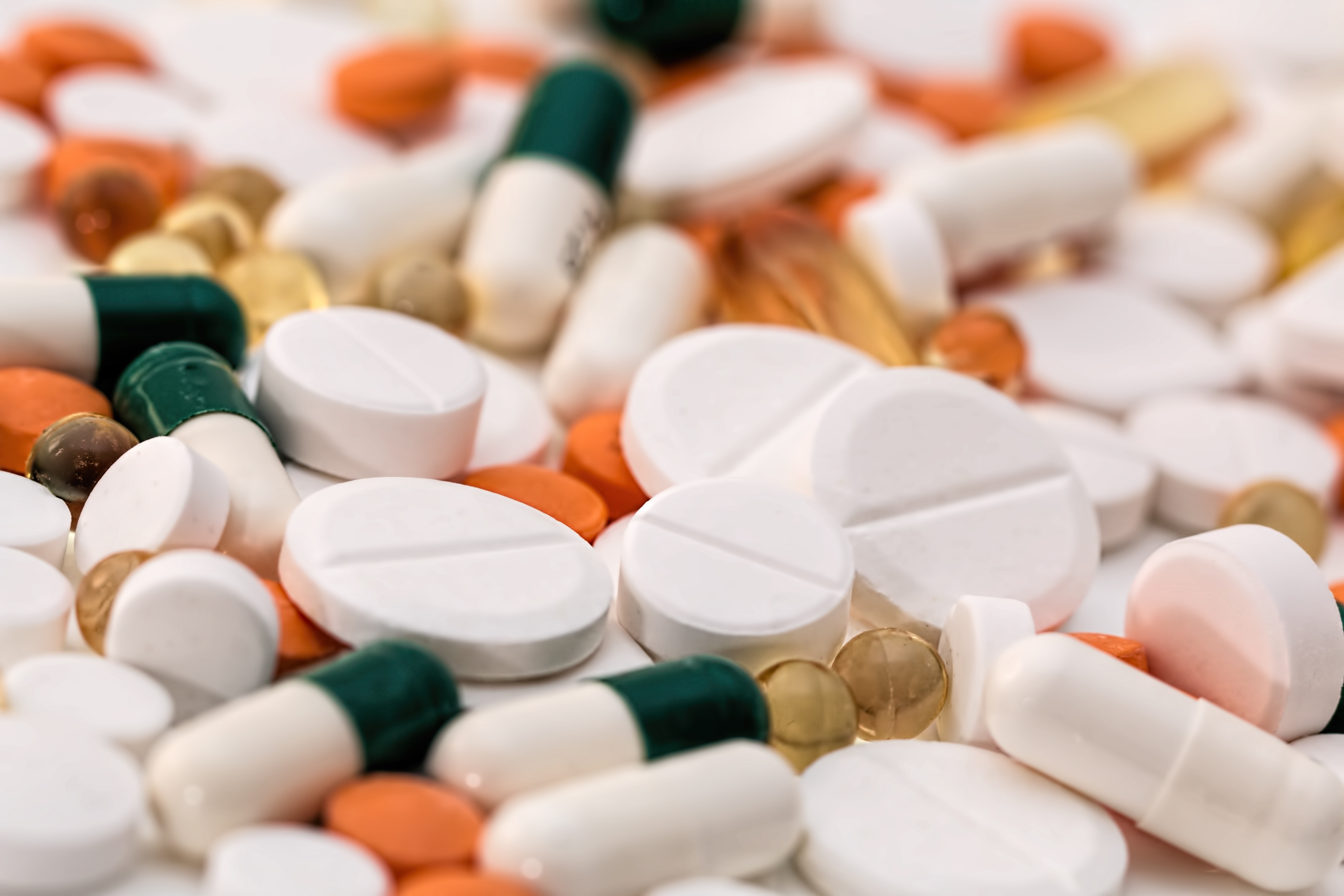
03 Nov Georgia Drug Abuse Statistics
Table of Content
While the rates and prevalence of specific public health crises may vary from state to state, each and every one has its fair share of issues that it must address and overcome. One of the most serious and uniquely challenging concerns that a state’s population must tackle is drug abuse, especially due to the socioeconomic issues that result from this drug abuse crisis such as increases to drug crime, poverty and mortality rates.
Nationwide, drug overdoses are now the leading cause of death for Americans under the age of fifty. Georgia was no exception, averaging over a thousand deaths a year for the last decade from complications due to drug use. Car accidents used to be the number one killer of people beneath the age of thirty-five, guess what it is now? Although Georgia does fall beneath the national average, the number of drug overdoses within the state has tripled since 2000, with the vast majority of those deaths being related to prescription drugs. Georgia has approximately 10.7 drug overdose deaths for every 100,000 citizen.
According to the CDC, more than ten percent of American citizens older than the age of ten use an illicit drug at least one time per month. Frighteningly, roughly 70,000 adolescents, approximately nine percent of the state’s population in that age group also reported illicit drug use within the past year. Thirty-five percent of the teenage Georgians surveyed said that they did not believe smoking at least one pack of cigarettes daily to be a significant risk. Further, 56 percent of teenagers did not believe drinking five or more drinks more than once a week to be hazardous to health.
Drug abuse is among the most serious challenges that the state’s population faces, and it takes many distinct forms. Whether you or someone that you care about is dealing with these problems, keeping yourself informed about the statistics and treatment options can help. Here’s what you should understand about Georgia substance abuse statistics.
Alcohol Abuse
Throughout the course of human history, alcohol is without doubt the most abused drug by both men and women and remains so today. Despite popular media and constant commercials inundating young people by showing drinking to be trendy or completely socially acceptable, alcohol continues to plague much of society. It is estimated that alcohol abuse healthcare costs the country $27 billion per year with an estimated $250 billion lost due to decreases in work productivity and increases in crime. Georgia is no exception when it comes to having its fair share of alcohol related problems, with roughly fifteen percent of Georgian citizens binge drinking on a weekly basis, the twelfth highest average of all the states.
Annually there are more than 2,000 deaths per year credited to alcohol use. It was reported in 2016 that there were more than 19,000 arrests statewide for DUIs. On average, over three hundred deaths a year can be attributed to impaired driving, resulting in twenty-percent of all traffic fatalities. Alcohol was the primary drug of abuse in almost half of the cases where Georgian citizens were seeking treatment of addiction. This number grows even larger when viewed as the secondary drug of the abuser as seen in cases for cocaine and marijuana treatment.
Outside of alcohol abuse and alcoholism, there are an entire slew of other problems brought about by the addiction. Alcoholics are at a higher risk for other diseases. Ailments like cancer, heart attacks, liver disease, spikes in blood pressure, cancer, and brain damage become possibilities for the alcoholic. Yet outside of consequences exclusive to the alcoholic, heavy drinking can lead to unexpected pregnancies, aggressive behavior, violence, sexual assault, public endangerment, and other issues that affect society as a whole. So, these rising rates of alcoholism are not simply a problem faced by individual citizens, but rather an issue for the entire state of Georgia, regardless of whether or not they drink.
Marijuana Abuse
Presently, over 25 million Americans use marijuana either recreationally or medicinally every single month. It is currently the most used illicit substance in the country and barring some bombshell study revealing severe negative impacts of the drug; it remains unlikely that these rates will see much of a change. Despite the prevalence of use throughout the country, Marijuana is still considered and enforced as a Schedule 1 Drug by the DEA, which meets three characteristics:
-
- The Drug or other substance has a high potential for abuse.
-
- The drug or other substance has no currently accepted medical treatment use in the U.S.
- There is a lack of accepted safety for use of the drug or substance under medical supervision.
Other Schedule 1 drugs are crystal meth, methaqualone, ecstasy and heroin. In Georgia, 663,000 people ages thirteen and older reported marijuana use within the past year, that number translates to seven percent of all citizens within the state smoking at least one time which is in line with the national average. Of those, 106,000 were teenagers, 226,000 were young adults, and 331,000 were twenty-six or older.
Quite a few people in Georgia believe marijuana should be legalized in response to the deaths and harmful effects that have sprung from the sale of synthetic weed, a legal substitute that ironically is much more dangerous than the actual thing. There have been over 6,000 calls to the ER and more than 100 visits in just the last year.
Cocaine Abuse
The United States is the largest consumer of cocaine, worldwide, and is currently the second most commonly used recreational drug in America behind marijuana. According to The National Institute on Drug Abuse (NIDA), twenty five percent of Americans between the ages of 26 and 34 have tried cocaine within the past year. This pervasive use throughout America results in 12,000 annual arrests due to cocaine use or dealing, over 300,00 Emergency Department visits and a sobering 15,000 American deaths as a result of complications from use, such as heart attack, stroke or respiratory arrest.
Designated a scheduled two controlled substance by the DEA, cocaine has been cited as a, “High abuse, high dependency risk, with a full range of possible negative consequences from use, both psychologically and physiologically. Cocaine street names is referred to as “blow,” “coke,” or “crack” if it is in its freebase and most addictive form.
Cocaine, specifically, crack, represents one of the most crucial drug threats to Georgia, and is the drug most commonly associated with violent crime in the state. Cocaine is widely offered in Georgia due to its prime location on the cocaine corridor of the Mexican cartels, the primary sellers and distributors of powdered and crack cocaine in Georgia.
It appears that the Georgia’s cocaine abuse percentages are comparable to the nationwide average. According to the Substance Abuse and Mental Health Services Administration (SAMHSA) Treatment Episode Data Set (TEDS), the state had more cocaine-related treatment admissions to publicly funded facilities than admissions for abuse of any other illicit drug with sixty-seven percent of those visits being related to crack. When it comes to most places in America, behind Marijuana, Cocaine is typically going to be the most abused drug.
Opiates Abuse
The country currently faces an opioid epidemic, with states across the board experiencing a rise in opioid abuse, and a concurrent spike to the rates of fatalities and overdoses. According to
Former U.S. Attorney John Horn, “For some areas of the country, heroin abuse is the single largest public health issue, and these startling trends have unfortunately come to Georgia. The same factors and causes that have led to the crises in New England and the Midwest are found here, and deaths from heroin overdoses are multiplying both in the city as well as the suburban counties. Steps must be taken now to head off this trend before heroin becomes our biggest issue, because the effects on the communities where this has happened are truly devastating.”
Since 2000, the rate at which opiates were prescribed has quadrupled and now, opiates are the number one killer of people under 35, surpassing auto accidents. In 2015, 33,000 citizens died of overdosing on opioids. That number rose to 50,000 in 2016, which means more than 100 American die from opiate abuse per day. Further, Heroin, a deadly drug with same origin as opioids, is responsible for the additional deaths of 13,000 Americans annually. Georgia is no exception to this trend. Within the last decade, Georgia has seen a 1000% increase in opioid overdose hospital admissions. There are roughly 1,300 overdoses annually in Georgia and eighty percent of those overdoses are opioid-related. These numbers are only expected to continue to rise. Around 361,000 people or 4.6% of Georgian citizens used pain relievers for nonmedical purposes, during the same time 6.24% of Georgian teenagers used pain pills non-medically.
As if matters could not worsen with Georgia’s rampant heroin and opioid problem, the drug fentanyl—an opioid that is fifty times more powerful than heroin per microgram—has infiltrated the drug market. Because it is simpler to produce and produces the same effect as heroin, many drug dealers have begun cutting their opiates with it. In early 2017, Southwest Georgia had to deal with a string of batches of counterfeit opioids that were cut with a fatal dose of fentanyl. This led to dozens being hospitalized within hours and more than four dead before a recall could be made.
One of the trends from the opioid epidemic is that the demographics of drug abuse users have undergone a noticeable shift. Historically, addicts are most highly concentrated within low-income suburban neighborhoods and are generally minority communities, with the most commonly afflicted users being between the ages of eighteen and twenty five. However, we are now seeing a marked rise in middle class, white males and females, between the ages of twenty to thirty being the primary users. We have also a marked an uptick in addiction and abuse for senior citizens who deal with a variety of ailments that require pain medicine.
This opioid epidemic is costing the state of Georgia a massive amount of money—to combat a problem as serious as the one Georgia faces statewide programs must create awareness, increase stocks of naloxone (the drug that counteracts overdoses) and support treatment facilities. The Trump administration recently announced an $11.7 million dollar grant to Georgia in order to combat the heroin and opioid issue.
Conclusions
There are currently over 120 overdose deaths a day in the U.S. and those numbers are only expected to rise and as of now, there is no end in sight to these issues. Addiction, abuse and overdose rates have continued to spike as criminal organizations have poured illicit drugs into the communities. The reality is, the cost to the state, in not only dollars, but lives can no longer be ignored. Increases in awareness and infrastructure can help prevent future addicts and can aid those currently fighting addiction and substance abuse.
In order to combat these sobering numbers, Congress has passed several important legislative pieces targeting substance abuse numbers. One of them being CARA, a six-pillar system intended to combat the opioid and heroin epidemic. A relatively new program, its goal is to expand and infuse cash into infrastructure: from increasing education and prevention efforts, the abundance of naloxone, resources to treat addiction, and more treatment centers and research platforms statewide. Although the numbers have yet to shift, legislators are confident these can make a difference.
President Trump has also signed orders for the presidential commission to focus funds and time on combatting the opioid epidemic. The plan being: to assign more federal tax dollars in the fight against addiction, reexamine the structure and effectiveness of treatment centers and create a nationwide awareness campaign. While it may seem like throwing money at an insolvable problem, it is positive movement in the right direction.
Sources:
“Georgia Opioid Summary.” NIH. Mar. 2019. https://georgiadrugdetox.com/resources/georgia-drug-abuse-statistics/
“Opioid Abuse.” Office of Attorney General Chris Carr. 7 Mar. 2019. https://law.georgia.gov/opioid-abuse
Spivey, Jon. “Atlanta Drug Abuse Statistics.” USA Mobile Drug Testing. 7 Mar. 2019. https://usamdt.com/atlanta-georgia/drug-abuse/atlanta-drug-abuse-statistics/




 678-771-6411
678-771-6411



No Comments